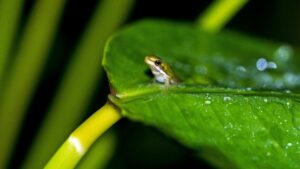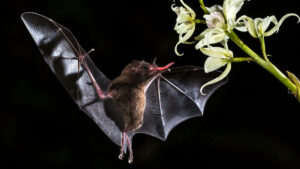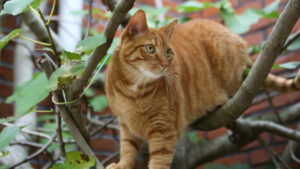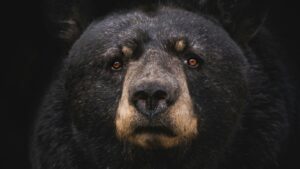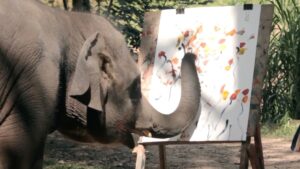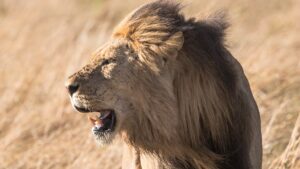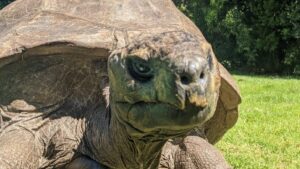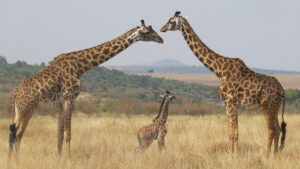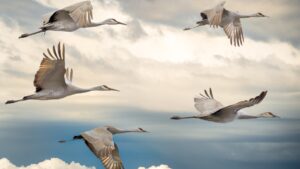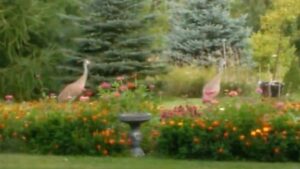Migratory birds are nature’s globetrotters, embarking on epic journeys that would impress even the most seasoned traveler. But have you ever wondered how these avian adventurers manage to migrate and find their way across continents, oceans, and even deserts without the help of GPS or a trusty map app? Well, folks, it’s time to take a peek into the high-flying world of our feathered friends and discover how birds navigate when they migrate — with the finesse of an airline pilot.
Magnetic marvels: The secret to how birds navigate
Birds have a secret superpower, one that has scientists scratching their heads in wonder — the ability to detect Earth’s magnetic fields. Yes, you heard it right! They’ve got their own built-in compass, which is basically the envy of every human who has ever gotten lost in a shopping mall.
Imagine you’re a bird, flapping your wings and thinking, “Gee, I need to get from Point A to Point B, and that’s a lot of wing-flapping miles.” Well, no worries because you’ve got these teeny, tiny iron-containing cells in your beak called magnetite, per the Smithsonian Science Education Center. These cells work together to create a magnetic map of the Earth’s surface, guiding you on your grand adventure. It’s like having a mini Iron Man suit right there in your beak!
Landmarks: Nature’s billboards for avian migration

Now, let’s talk about the importance of landmarks. Not the “Grocery store on the left, turn right at the big oak tree” kind of landmarks, but nature’s versions. Birds have an uncanny ability to recognize distinctive physical features on the landscape, from mountains to rivers to coastlines. It’s as if there’s an enormous billboard that says, “Next Stop: Margaritaville!”
Imagine being a bird flying over the Grand Canyon. You’re not just appreciating the view — you’re using it to figure out where you are. Birds have an astonishing ability to remember these landmarks, ensuring they stay on course. Just picture them saying, “Fly straight until you hit the Mississippi River, then hang a left!”
Celestial map: The stars point the way
If you thought birds were done with their navigation toolkit, think again! They’re not just skilled at magnetic sleuthing and reading natural billboards — they’ve got a flair for the celestial as well.
During the night, many bird species take their cues from the stars, per the Cornell Lab. They use constellations and the North Star as their personal cosmic GPS.
Can you imagine the conversations among these starry-eyed travelers? “Hey, Bob, do you see that star? Yeah, the shiny one. Let’s follow it. It’s our ticket to Miami!”
Environmental ‘tweets’
Birds also have a social media network of sorts that’s totally offline and cooler than anything Facebook or Twitter (X) could ever offer. They communicate with each other through “tweets” of a different kind — vocalizations and visual signals.
Birds on migration often fly in flocks, and they’re not just doing it for the company. They share important information about weather conditions, food sources, and potential hazards. It’s a bird version of texting your friends, “Avoid the thunderstorm ahead! There’s a tailwind buffet in Tijuana!”
The Weather Channel — avian style
Birds aren’t just taking a stab in the dark when it comes to weather conditions during their migration. They have an uncanny knack for reading the skies and keeping an eye on weather patterns.
Imagine being a bird and thinking, “Should I pack my umbrella for this journey?” Well, birds do something pretty close to that. They can sense changes in air pressure, temperature, and wind speed. If a storm’s brewing, they’ll often delay their departure or find an alternative route, proving that birds are not just great navigators but also amateur meteorologists.
Hitchhiker’s Guide to Migration
Ever heard of “hitchhiking” during migration? No, we’re not talking about birds sticking out their wings and hoping for a ride in a passing jet. It’s a bit more subtle than that.
Birds often take advantage of favorable wind patterns to save energy and glide through the skies. They hop on invisible highways in the sky, known as “flyways,” which are like the bird version of a secret highway that only they know about. It’s the avian equivalent of catching an Uber ride on a gusty day.
Putting it all together: Symphony of navigation
So, how do birds navigate when they migrate? They combine all these remarkable skills — magnetic sensing, landmark recognition, celestial guidance, social networking, meteorological forecasting, and hitchhiking — to pull off their incredible migrations.
It’s a birdy symphony of navigation, and it’s both awe-inspiring and hilariously impressive. Picture it: flocks of birds soaring through the air, following invisible magnetic lines while cracking jokes about the weather and exchanging bird-to-bird tweets.
The amazing capabilities of bird navigation for migration
When you see a flock of geese honking their way across the sky or a swallow darting through the air, take a moment to appreciate the sheer marvel of their navigation skills. Birds are the true high-flyers when it comes to navigating across vast distances.
So, here’s to our feathered navigators, making us humans look like lost tourists with a faulty GPS. Let’s tip our hats (or feathers) to these incredible creatures who show us that sometimes, the journey is just as entertaining as the destination.
RELATED: Listening to Bird Songs Improves Mental Health, Shows Studies
Header image: Sandhill cranes / Chris Biggs via Unsplash
I’m Mark Putzer, and my passion for animals and all things nature is a life-long love affair. Growing up in Wisconsin, I had many cherished memories of hiking, skiing, and enjoying the abundant wildlife in the Badger State.
My passion for animals led me to marine biology research for my studies at the University of Wisconsin. I researched the behavior and communication of humpback whales around Hawaii and Orca Whales around the San Juan Islands of Washington State. The experience of being close to these massive and magnificent creatures is amazing. Later, I taught outdoor education to children in California — passing along my knowledge of animals and nature to the curious minds of the next generation. I also love pets. This includes a Labrador Retriever dog named “Molly” when I was a kid — and now, an adventurous tabby cat named “Rosy.”
I’m here to share the wonders of the animal kingdom with you. Whether it’s a cherished pet at home or an animal out in the wild, there are many unique stories and interesting information to share on Weird Animal News! Enjoy!

